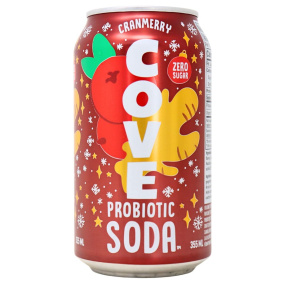
Navigating Food Allergies: a Guide To Allergen-Free Food
Managing food allergies doesn’t have to be overwhelming. Learn how to identify allergens, read labels, and find safe, nutritious alternatives. This guide offers practical tips for dining out, shopping smart, and cooking allergen-free meals with confidence.
Summary
This comprehensive guide to navigating food allergies covers FDA-recognized allergens, hidden ingredients to watch for in common foods, and practical strategies for maintaining an allergen-free diet—including label reading, meal planning, allergy training, finding substitutions, and preventing cross-contamination.
Living with food allergies often feels like navigating a minefield of hidden ingredients, mysterious labels, and constant vigilance. Every meal becomes a potential risk, leaving many people feeling overwhelmed and restricted in their food choices.
This guide provides the essential information you need to confidently manage food allergies. You'll discover exactly what to look for on food labels, how to prevent cross-contamination in your kitchen, and which substitutions work best for common allergens—practical knowledge that immediately helps you create a safer eating environment while still enjoying delicious meals.
What Are Food Allergies?
Food allergies occur when the immune system identifies certain food proteins as harmful, triggering reactions ranging from mild itching to life-threatening anaphylaxis. Milk, eggs, and peanuts represent the most common allergens in the United States, affecting millions of people and requiring careful dietary management.
Food Allergens Recognized by FDA
Food allergies affect approximately 32 million Americans, with reactions varying from mild discomfort to severe, potentially fatal responses. The prevalence continues to rise, especially among children.
Understanding which allergens must be declared on food labels helps consumers make safer choices. The FDA enforces strict labelling requirements for major food allergens to protect sensitive individuals.
The Food Allergen Labeling and Consumer Protection Act (FALCPA) initially required the identification of eight major allergens, with sesame recently added as the ninth.
The FDA officially recognizes these major food allergens that must be clearly labelled:
- Milk
- Eggs
- Fish
- Crustacean shellfish
- Tree nuts
- Peanuts
- Wheat
- Soybeans
- Sesame
These nine allergens account for over 90% of documented food allergies in the United States, making them the primary focus of allergen labelling regulations and awareness campaigns. Manufacturers must clearly identify these ingredients on product packaging to help consumers avoid potential reactions.
Common Foods and Their Potential Allergens
Many everyday foods contain hidden allergens that aren't immediately obvious to consumers with food sensitivities. These ingredients often appear under technical or alternative names that can be difficult to identify without specialized knowledge.
Reading ingredient labels carefully becomes essential as allergens can be components of compound ingredients or hidden under scientific terms. Even foods you might consider safe can contain traces of common allergens through shared manufacturing processes.
Cross-contamination during food processing presents another challenge, as allergens can appear in products that don't technically contain them as ingredients. This is why many labels include precautionary statements about potential allergen exposure.
|
Allergen |
What to Look For |
|
Milk |
Casein, Whey, Lactose, Butter, Cream, Curds, Ghee, Lactalbumin, Milk solids |
|
Eggs |
Albumin, Lysozyme, Ovalbumin, Globulin, Vitellin, Mayonnaise, Meringue, Marshmallow, Pasta |
|
Peanuts |
Arachis oil, Nut butter, Beer nuts, Ground nuts, Marzipan, Satay, Mandelonas, Hydrolyzed plant protein, Certain candy |
|
Tree nuts |
Almond paste, Cashew butter, Gianduja, Nougat, Praline, Pesto, Pine nuts, Nut extract, Walnut oil |
|
Sesame |
Benne, Tahini, Sesamol, Gingelly oil, Sim sim, Halva, Za'atar, Hummus, Gomashio |
|
Soy |
Edamame, Miso, Natto, Shoyu, Tamari, Tempeh, Textured vegetable protein, Tofu, Soy lecithin |
|
Wheat |
Bran, Bulgur, Couscous, Durum, Farina, Kamut, Semolina, Seitan, Triticale |
|
Fish |
Anchovies, Surimi, Fish sauce, Fumet, Caesar dressing, Worcestershire sauce, Bouillabaisse, Fish gelatin, Omega-3 supplements |
|
Crustacean shellfish |
Bisque, Crab extract, Etouffée, Gumbo, Jambalaya, Paella, Seafood flavouring, Scampi, Bouillabaisse |
Considerations to Keep an Allergen-Free Diet
Maintaining an allergen-free diet requires vigilant label reading, understanding hidden ingredients, and awareness of cross-contamination risks. Success depends on developing strategies for grocery shopping and meal planning. Finding suitable ingredient substitutions is essential for creating nutritious meals while avoiding potential allergens and their derivatives.
Read Labels Meticulously
Reading food labels becomes a critical skill when managing allergies, requiring attention to both ingredient lists and manufacturing statements. The FDA requires the top nine allergens to be clearly labelled, making identification somewhat easier.
Looking beyond the ingredients list to manufacturing statements can reveal potential cross-contamination risks. Phrases like "may contain" or "processed in a facility that also processes" indicate possible allergen exposure that isn't reflected in the ingredients.
Many allergen-friendly products like Nutpods dairy-free creamers or Siete grain-free tortillas make label reading easier with clear allergen statements and third-party certifications. These can serve as reliable options when you're unsure about other products.
When reading labels, pay special attention to the following:
- Precautionary allergen statements
- Ingredient derivatives that contain allergens
- Cross-contamination warnings
- Changes in formulation (always re-check familiar products)
- Allergen-free certifications
Plan Meals and Snacks Ahead
Advance meal planning helps avoid last-minute food decisions that might compromise allergen safety. Taking time each week to plan allergen-free meals creates a framework that reduces stress and improves dietary adherence.
Preparing snacks ahead of time prevents reaching for potentially unsafe options when hunger strikes unexpectedly. Having readily available portable, allergen-free options makes navigating social situations, travel, and busy workdays easier.
Creating a rotating menu of tested, safe recipes simplifies the cooking process while ensuring nutritional needs are met. Building a collection of reliable recipes adapted to your specific allergen concerns provides variety without constant research.
Batch cooking and freezing allergen-free meals save time and ensure safe options are always available, even during hectic periods. This approach also reduces the frequency of food preparation, minimizing opportunities for cross-contamination in the kitchen.
Consider Allergy Training
Proper allergy education empowers individuals to navigate daily challenges more confidently and respond effectively to emergencies. Understanding the science behind allergic reactions helps explain why even trace amounts of allergens can trigger serious responses.
Recognizing early symptoms of allergic reactions can prevent escalation to more severe manifestations like anaphylaxis. Common early warning signs include itching, hives, swelling, stomach pain, or a sense of unease that shouldn't be ignored.
Learning emergency protocols, including when and how to use epinephrine auto-injectors, can be life-saving during severe reactions. Practice with trainer devices ensures you'll be prepared to act quickly if a real emergency occurs.
Extending allergy education to family members, caregivers, teachers, and friends creates a wider safety net for those with food allergies. Group training ensures everyone understands their role in preventing exposure and responding appropriately to reactions.
Find Suitable Substitutions
Learning to use substitutions effectively opens up more culinary possibilities while maintaining allergen safety. The growing market for alternative products has made allergen-free cooking more accessible and enjoyable than ever before.
For milk allergies, plant-based alternatives like almond, oat, or coconut milk work well in most recipes. Products like Kettle & Fire bone broth can add richness to recipes without dairy while providing additional nutrients.
Egg replacements such as applesauce, flaxseed gel, or commercial egg alternatives maintain texture and binding properties in baked goods. Primal Kitchen condiments and dressings offer flavour without common allergens, making meal preparation simpler.
Consider these versatile substitutions for common allergens:
- Coconut aminos instead of soy sauce
- Cassava, almond, or coconut flour instead of wheat flour
- Nutritional yeast for cheese-like flavour
- Sunflower seed butter instead of peanut butter
- Aquafaba (chickpea liquid) as an egg white substitute
- Coconut cream instead of dairy cream
Be Cautious with Cross-Contamination
Cross-contamination represents a significant risk for people with food allergies, even when direct ingredients are safe. Understanding contamination pathways helps establish effective preventive measures in your kitchen.
Maintaining separate cooking utensils, cutting boards, and storage containers prevents allergen transfer during food preparation. Colour-coding these items makes it easier for everyone in the household to follow safe practices consistently.
Thoroughly cleaning cooking surfaces, hands, and equipment between preparing different foods reduces contamination risk. Standard cleaning methods are usually sufficient, but more rigorous procedures may be necessary for severe allergies.
When dining out, communicating clearly with restaurant staff about cross-contamination risks is essential to ensure proper precautions are taken during meal preparation.
About Natura Market
At Natura Market, we understand the challenges faced by those navigating food allergies and dietary restrictions. Our commitment to health-conscious consumers includes rigorous product selection criteria, ensuring every item meets strict standards for ingredient quality and allergen safety. We continuously search for innovative brands that provide delicious alternatives for various dietary needs, making the journey toward allergen-free living more enjoyable and accessible for Canadians.
We believe everyone deserves access to foods that support their health without compromising on taste or convenience. That's why we've built a carefully curated collection that addresses the most common allergen concerns while providing clear information about ingredients and manufacturing processes. Our team stays informed about the latest developments in allergen research and product innovations to ensure we remain a trusted resource for those managing food allergies and intolerances across Canada.






